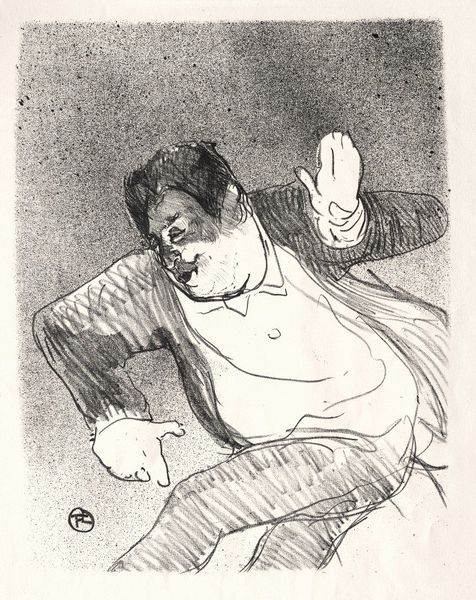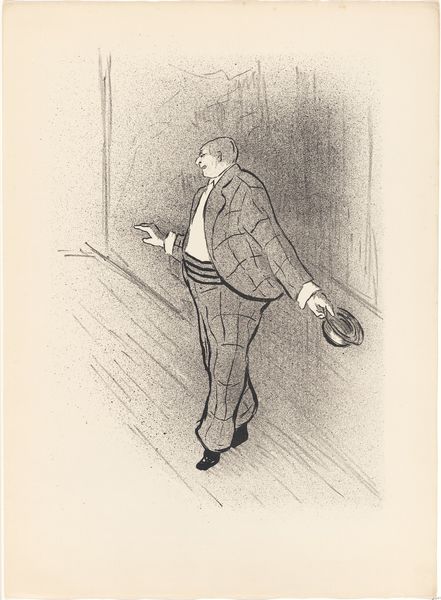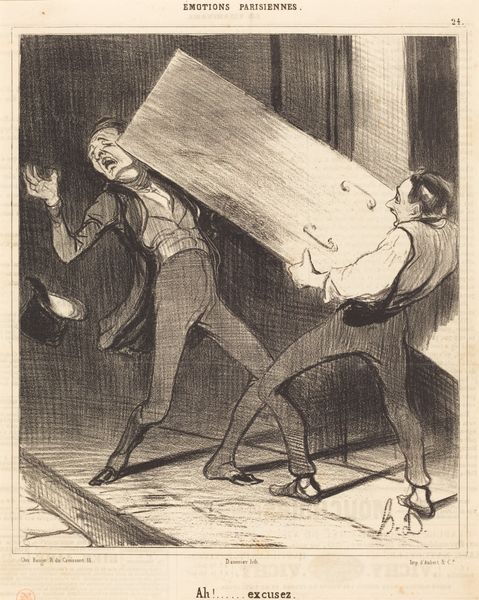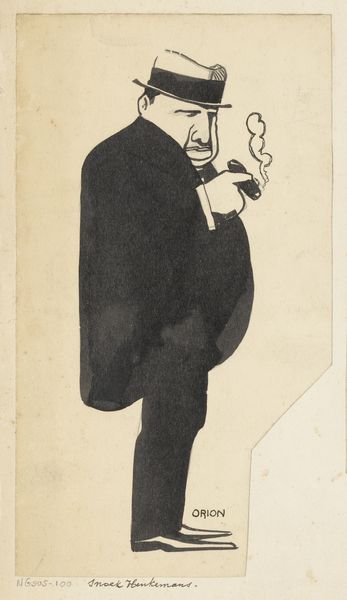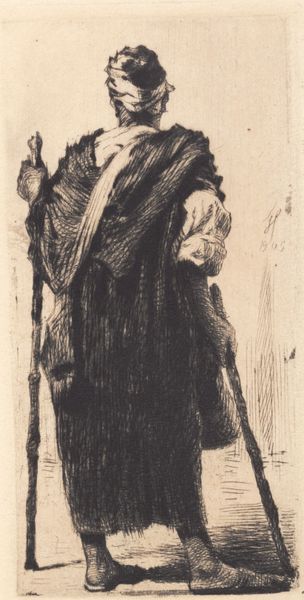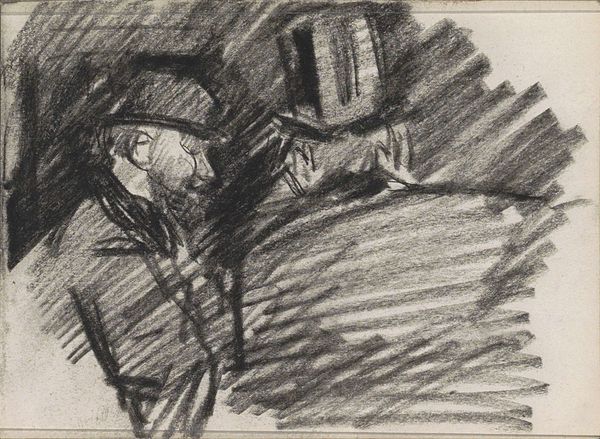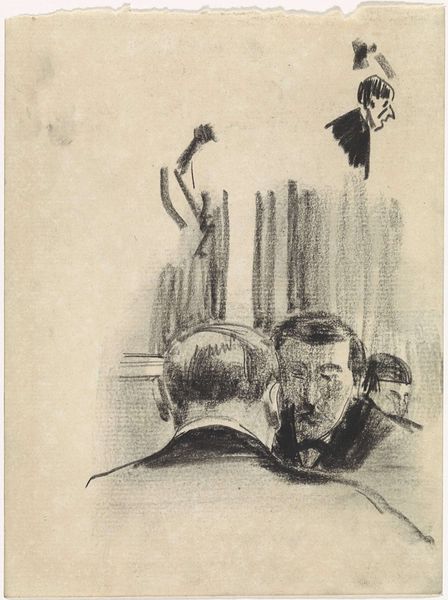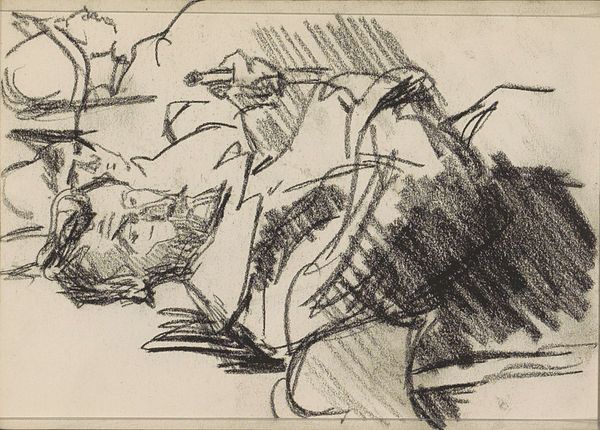
Copyright: Public Domain: Artvee
Curator: This striking 1893 lithograph is entitled "Aristide Bruant," by Henri de Toulouse-Lautrec. Editor: My immediate impression is one of stark contrast and dynamic tension, mostly black ink on off-white ground, with that raised fist as a commanding focal point. Curator: Indeed. Bruant was not just a performer but also a chronicler of Parisian life, much like Lautrec himself. This work embodies their shared affinity for portraying the marginalized and working class. The exaggerated features and uncompromising gaze seem to question the viewer, wouldn't you agree? It's about more than surface representation, it's an act of bearing witness. Editor: Absolutely. The composition funnels our vision along the figure's raised arm, creating a pronounced upward thrust, an assertive statement through the diagonal trajectory, against the implied vertical rigidity of the architecture suggested. His gaze, fixed directly forward, further punctuates the forcefulness. It is through the artifice of line, shadow and direction that a feeling emerges of almost aggressive directness, in counterpoint to the more fluid scarf at his neck. Curator: And what do you read into that iconic scarf, juxtaposed with the rigid arm? Editor: It complicates the portrait, introducing ambiguity. The stark white scarf loops casually against his neck, softened only by shadow. The gesture contrasts sharply with the hardness conveyed in his fist and glare, subtly exposing vulnerabilities, while hinting at complexity and interiority beneath Bruant's public persona. Curator: He challenged bourgeois norms, appropriating working-class dress, language and songs to challenge established political structures of class and elitism. Editor: Thank you, that offers deeper insight to that apparent tension, how such simplicity in material suggests much more, enriching our understanding. Curator: Exactly, it underscores that beyond formalism lies a commentary. Viewing through this lens makes for an enriching experience. Editor: It truly does reveal a portrait that goes well beyond the superficial, doesn't it? The intersection of aesthetic and socio-historical insight proves essential.
Comments
No comments
Be the first to comment and join the conversation on the ultimate creative platform.

